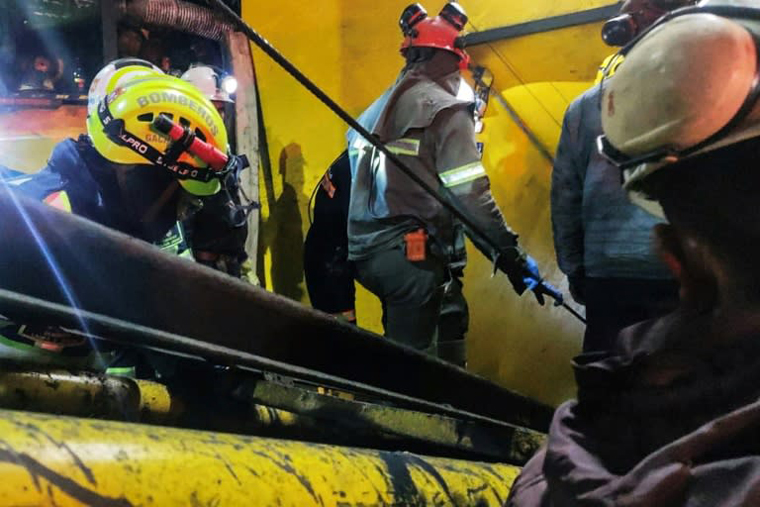
SUTATAUSA (Colombia), March 16 (NNN-AGENCIES) — Rescuers and miners raced against the clock Wednesday to save 10 workers trapped in a central Colombian coal mine after an explosion killed at least 11 people.
With oxygen fast running out for any survivors, family members outside the mine waited wrapped in woolen ponchos against the cold, desperate for news of their loved ones.
Separated from the accident site by a barbed wire barricade, they watched as a machine pumped water out of a mine shaft.
President Gustavo Petro called it “an unfortunate tragedy,” in a Twitter message.
“We are making every effort with the Cundinamarca regional government to rescue the trapped people alive,” he said, offering “a hug of solidarity to the victims and their families.”
National mining agency ANM said two workers had been rescued from the mine at Sutatausa.
“We regret what happened and we stand in solidarity with the families of those affected,” ANM posted on Twitter.
A build-up of methane gas apparently triggered the Tuesday night explosion in the underground complex, Sutatausa municipality’s mayor Jaime Arevalo said.
He confirmed the death toll and said relief agencies are working to locate the missing miners, who are believed to be trapped some 900 meters underground.
“When the explosion occurred, all the pumping, drainage and lighting systems collapsed,” the mayor added.
He described the rescue effort as “very complex,” saying oxygen was running out and water was “beginning to accumulate.”
Governor Nicolas Garcia of Cundinamarca department said the accumulated gases in the mine were ignited by a spark from a worker’s tool.
He told Blu Radio more than 100 rescuers were involved in the search, adding: “Every minute that passes means less oxygen” for those missing.
Survivor Joselito Rodriguez, 33, said that he felt a “tremor” while working and then, “I felt I was suffocating, and could not see anything.”
“Thank God we got out safely, but others are dead,” he said shortly after leaving the hospital where he received treatment.
Workers from other mines also rushed to the scene with their yellow hard hats and flashlights to join rescue efforts led by firefighters and rescue teams.
The explosion happened at a legal coal mine linked underground to five others.
Oil and coal are the main exports of Colombia, where mining accidents are frequent, especially at illegal digs in Cundinamarca and other departments in the country’s center and northeast.
Colombia registered more than 1,260 mining accidents from 2011 to May 2022, for an average annual toll of 103 deaths, according to official data.
At least 130,000 people make a legal living from mining in Colombia.
But unions consistently denounce poor working conditions, with a lack of protective gear and long working hours.
In August, nine miners were rescued from a collapsed illegal coal mine in the same department.
And last June, 15 people died at a mine near the border with Venezuela, also due to an explosion of accumulated gasses.
According to the ministry of mines and energy, in 2020 Colombia had 53 percent of proven coal reserves in Latin America and 0.6 percent of worldwide reserves.
Petro, who became president in August, has referred to coal as “poison” and vowed to transfer mining jobs to the agriculture, clean energy and tourism sectors.
Illegal mining, along with drug trafficking, is also a major source of income for Colombia’s armed groups that have waged a nearly six-decade conflict among each other and against security forces. — NNN-AGENCIES






